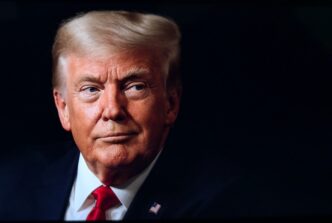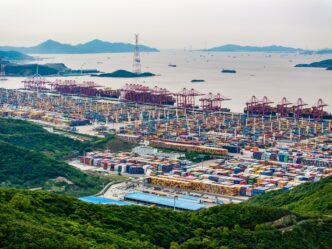As U.S. President Donald Trump escalates threats of reciprocal tariffs, Asian economies with substantial trade surpluses are urgently attempting to negotiate favorable outcomes to avoid higher duties.
Trump declared he would announce tariffs matching those imposed on U.S. goods by other countries. While no specific nations have been named, the implications point toward broad actions to reduce U.S. trade deficits.
According to Barclays analysts, most emerging Asian economies, except Singapore and Hong Kong, may experience increased U.S. import tariffs. The data from the World Trade Organization supports this, highlighting that Asian nations often have higher average tariffs on imports than the U.S., with India notably applying a 17% simple average rate versus the U.S.’s 3.3%.
China leads with a $295.4 billion trade surplus with the U.S., followed by Vietnam at $123.5 billion, Taiwan at $74 billion, Japan at $68.5 billion, and South Korea at $66 billion. Despite avoiding tariffs initially, Stefan Angrick from Moody’s Analytics warns that these economies remain vulnerable as U.S. policies could shift.
Vietnam is particularly exposed due to its large trade surplus and significant Chinese investments. In anticipation of trade restrictions, Vietnam plans to increase its procurement of U.S. aircraft and natural gas. Prime Minister Pham Minh Chinh has instructed cabinet members to prepare for a potential global trade conflict.
India also faces potential tariffs due to its imposing duties on U.S. imports. The U.S. could raise tariffs on Indian goods from 3% to over 15%. In response, India has reduced tariffs on various products and may discuss further reductions with Trump. The dialogue could extend to a U.S.-India free trade agreement, which would require substantial cuts from India to reflect reciprocity.
Japan maintains a positive standing with Trump, leading to speculation that it might avoid significant tariff increases. With low tariffs on MFN countries and ongoing discussions to increase imports of U.S. natural gas, Japan seeks to strengthen its economic ties without attracting punitive measures.
China has already faced additional tariffs, prompting modest retaliatory actions on U.S. goods. These measures, however, are seen as restrained, covering only a fraction of China’s total imports from the U.S. This strategy appears to reflect a desire for continued negotiations.
With Trump’s tariff threats looming, Asian countries are actively negotiating to protect their economies. The situation remains fluid, requiring these nations to be flexible in their trade strategies to maintain stability and favorable relations with the U.S.








